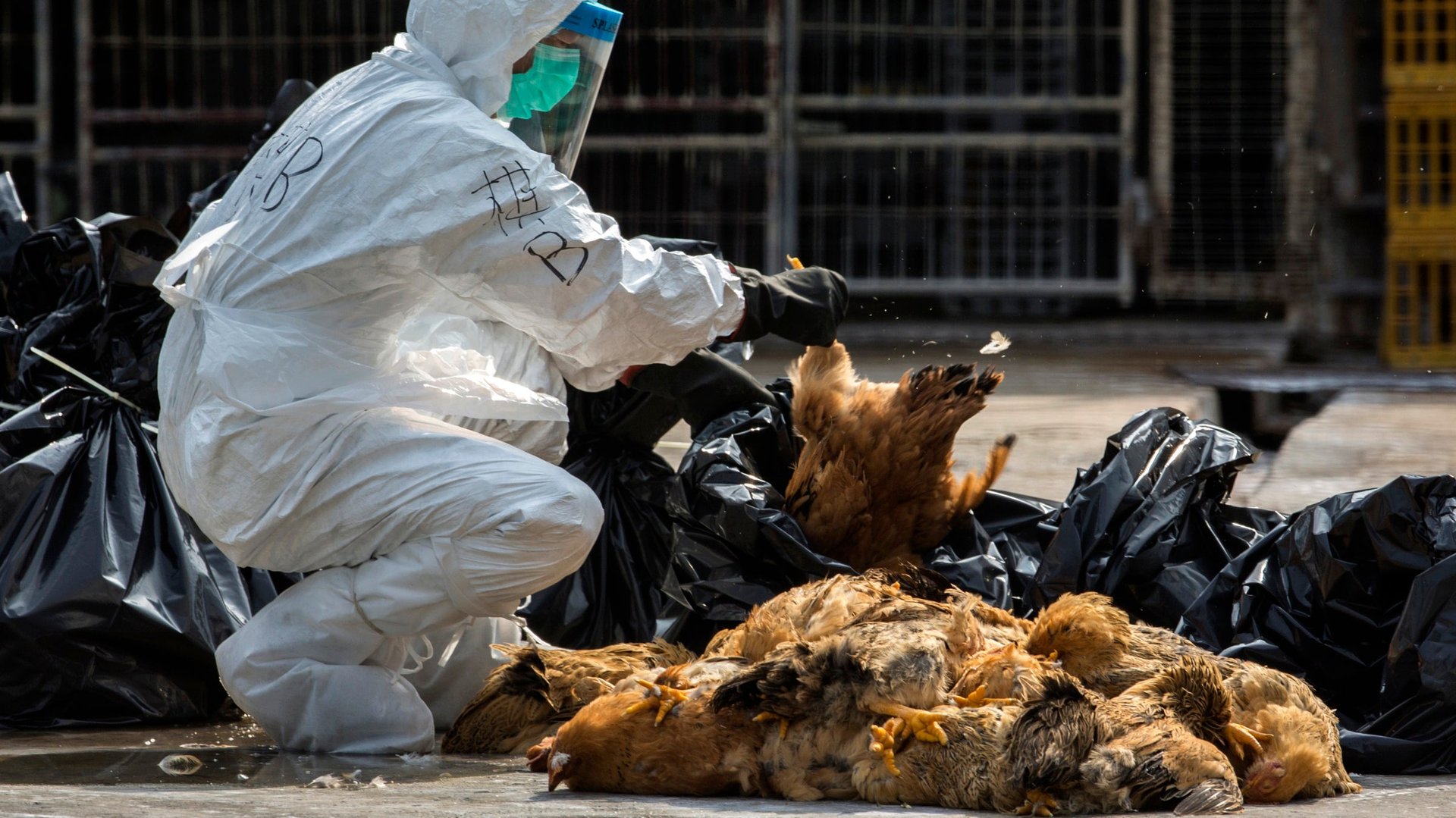Fear of bird flu cost Chinese poultry farmers $3.3 billion in one year
The latest strain of bird flu has cost Chinese poultry farmers around 20 billion yuan ($3.3 billion) since first reported in February of last year, according to the country’s agriculture ministry. This represents nearly 5% of the poultry industry’s expected annual revenue, which was $68.7 billion in 2012.


The latest strain of bird flu has cost Chinese poultry farmers around 20 billion yuan ($3.3 billion) since first reported in February of last year, according to the country’s agriculture ministry. This represents nearly 5% of the poultry industry’s expected annual revenue, which was $68.7 billion in 2012.
H7N9, or avian influenza, faded after the initial surge from February to May, but reemerged in late 2013. Including last year’s initial outbreak, 56 people have died of it in China. The strain has already killed 19 people in 2014, according to the Chinese Center for Disease Control and Prevention, and infected 96.
While five live poultry markets have tested positive for H7N9 since Jan. 1, the agriculture ministry reports that no farms have. Live poultry sales will be halted for three months beginning on Jan. 31, which should slow the spread of the disease. Meanwhile, the ministry urges people to continue eating chicken if they bought it through proper, regulated channels. But the illness—which can cause severe pneumonia in those who’ve had close contact with infected chickens (especially their droppings)—has put the country off poultry. Sales and prices of chicken have dropped as more infections come to light, Xinhua News Agency reports, and it’s legitimate farms that are suffering.
They’re not the only ones. Businessweek suggests that KFC, the chicken fast-food chain, which has already been hurt by the bird flu scare, could suffer again. While the company declined to comment, it reported a loss of 50 million yuan ($8.3 million) in China during the first half of 2013, compared to a 44.8 million yuan profit during the same period in 2012.